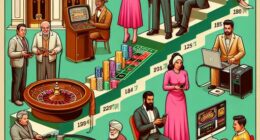RNIB Unveils Game Accessibility Toolkit Targeting Inclusive Play for Visually Impaired Gamers
In a groundbreaking move to bridge the accessibility gap in gaming, the Royal National Institute of Blind People (RNIB) has introduced the ‘Design for Every Game’ initiative. This project is set to revolutionize the way developers create games, making them more accessible to individuals with sight impairments.
Central to this initiative is a newly formed player testing panel. This panel is composed of a diverse group of gamers experiencing varying degrees of sight loss. The RNIB invites game developers, academic institutions, and research bodies to collaborate with this panel. This interaction is crucial for ensuring that games and associated research projects are both inclusive and accessible, offering a seamless experience for all users.
An integral component of the initiative is the creation of the ‘Best Practices in Accessible Gaming 2024 Development Kit’. This kit provides developers with comprehensive guidance on embedding accessibility features into their games from the ground up. The RNIB develops this tool to offer platform-specific solutions and accessibility frameworks, which empower developers to craft immersive experiences. These experiences are not only enjoyable for players with sight loss but also maintain the game’s technical excellence.
In collaboration with partners TP&M and HEX, the RNIB has also introduced ‘Spectrum Shift’, an engaging browser-based adventure game. This game serves as a practical demonstration of the Development Kit’s capabilities, showcasing innovations such as menu narration, audio cues, haptic feedback, scalable user interfaces, and high-contrast visuals. These features exemplify how accessibility can be seamlessly integrated into the gaming experience, enhancing enjoyment and usability for gamers with visual impairments.
Through these concerted efforts, the RNIB aims to make significant strides in raising awareness and implementing accessibility in gaming, ensuring that no player is left behind due to visual challenges.









